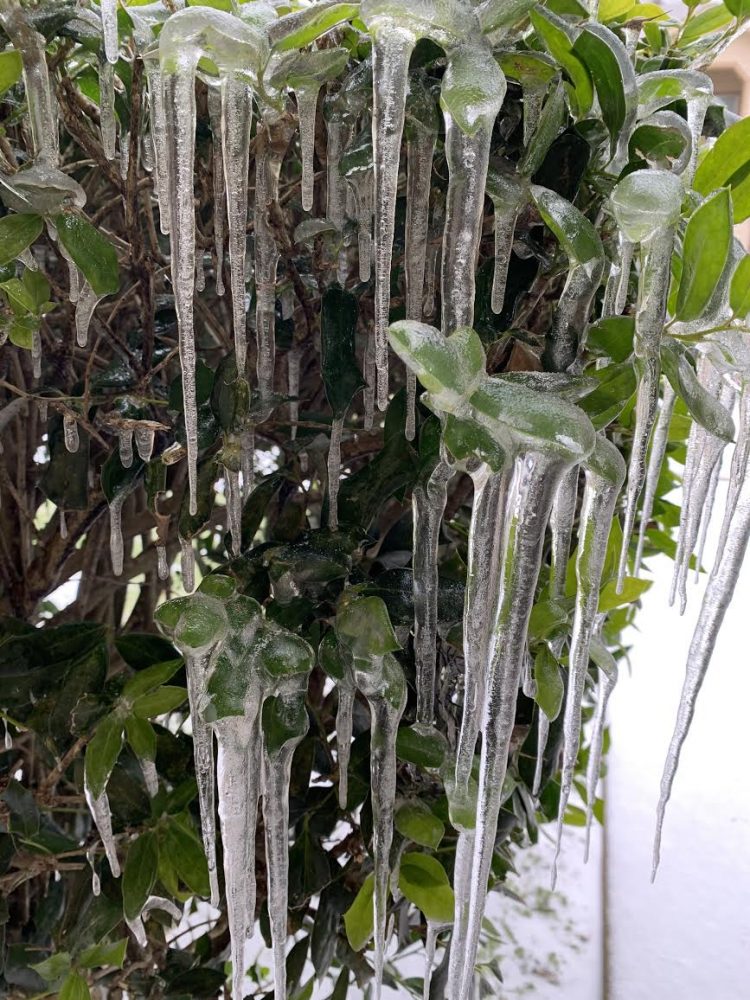Homeowners in Hopkins County should give special attention to exposed water pipes during the winter months. Freezing pipes are a problem in warmer climates where they often run through uninsulated or under-insulated attics or crawl spaces. Although we only have a few cold snaps per season, it’s still necessary to protect exposed water pipes. Leaving pipes unprotected can cause them to burst, which can result in a tremendous amount of damage to the home and the contents inside. You can drastically reduce your chance of property damage by preparing your water pipes before a hard freeze. The following suggestions can help you accomplish this task.

What Kind of Water Pipes Freeze and When?
- Water pipes have the potential to freeze and burst when the outside temperature reaches
20 °F or below. - Pipes that are most vulnerable to freeze are usually exposed to severe cold, such as:
outdoor hose bibs, swimming pool supply lines, water sprinkler lines, water pipes in basements,
water pipes in crawl spaces, water pipes in attics, water pipes in garages, and water pipes that run against exterior walls that have little or no insulation.
Prepare While the Climate Is Warm
- Drain water from the swimming pool and water sprinkler supply lines, following manufacturer’s or installer’s directions. Do not put antifreeze in these lines. Antifreeze is environmentally harmful and is dangerous to humans, pets, wildlife, and landscaping.
- Remove and drain outdoor hoses. Store in a shed or garage. Close inside valves supplying outdoor hose bibs if possible. Cover hose bibs with insulated covers.
- Check around the home for other areas where water supply lines are located and are in unheated areas. Look in the basement, crawl space, attic, garage, and under kitchen and bathroom cabinets. A hot water supply line can freeze just as a cold water supply line can freeze if the water is not running through the pipe and the water temperature in the pipe is cold.
- Consider installing products made to insulate water pipes like a “pipe sleeve” or installing UL-listed “heat tape,” “heat cable,” or similar materials on exposed water pipes. Many products are available at your local building supplies retailer. Newspaper can also provide some protection to exposed pipes as long as the cold temperatures are not frequent or prolonged.
Take Action During Cold Weather
- Keep the garage door closed if there are water supply lines located inside.
- Open kitchen and bathroom cabinet doors to allow warm air to circulate around the plumbing.
- Keep the heating thermostat set at a consistent temperature both day and night.
- If going out of town during cold weather, leave the heat on in your home. Set the thermostat to a temperature no lower than 55 °F, and open cabinet doors where there is plumbing.
- If you are going out of town and have a heat pump system, and if the temperature is forecast to be extremely low, you may need to switch the setting to emergency heat and reduce the thermostat setting to 55 °F.
Thawing Frozen Pipes after the Storm
- If you suspect that the pipe is frozen; keep the faucet open. Water will begin to flow as you treat the frozen area, which will help to melt more ice in the pipe.
- Make sure you know where the main water valve is located outside of your home. The frozen pipe may already be broken, and it will leak when the water is thawed. If this is the case, you’ll need to turn off the main water valve to your home until the leak is repaired.
- Apply heat to the frozen portion of the pipe. This can be accomplished by using the following sources of heat: a heating pad, electric hair dryer, a portable space heater, or wrapping pipes with towels soaked in hot water. Make sure that electrical cords do not come into contact with water. Do not attempt to use a blowtorch, kerosene or propane heater, charcoal stove, or other open flame devices; they present a serious fire hazard as well as release lethal carbon monoxide fumes into the air.
- Apply heat until full water pressure is restored. Call a licensed plumber if you are unable to locate the frozen area, if the frozen area is not within reach, or if you can’t get the pipe to thaw.
- Inspect all other faucets in your home to find out if additional pipes are frozen. If one pipe freezes, others may freeze also.
It is important to check for water leakage AFTER the cold weather hits. Remember that potable water is a scarce commodity and our water reservoirs are not at full capacity.
— Submitted by Dr. Mario Villarino, Texas AgriLife Extension Agent For Hopkins County, Agriculture/Natural Resources, [email protected].





